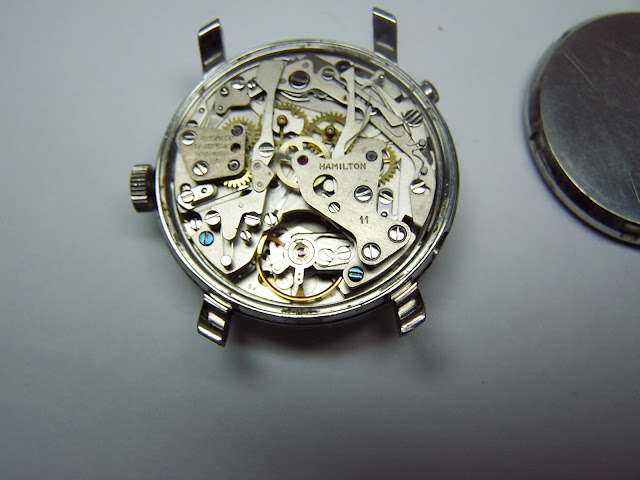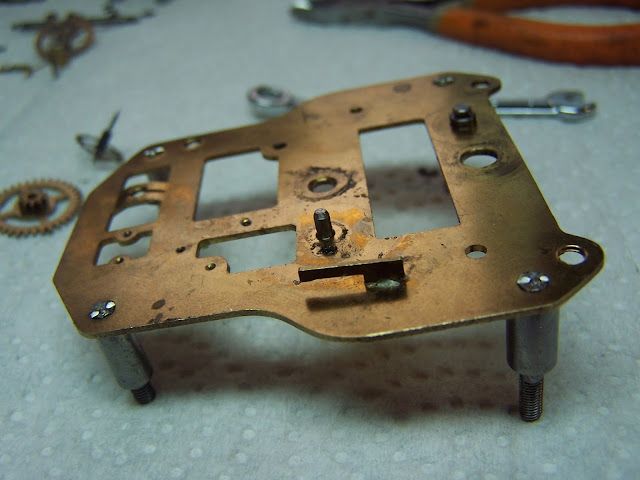Wednesday June 15th, 2016
All Pictures and Text Copyrighted 2016
Gary Fields
I recently acquired a large lot of watches. There were the usual bunch of quartz watches of all sizes and shapes, and then there were the mechanicals of all sizes and shapes. I had sat down for several evenings poring over all these treasures, pleased with what I had gotten, and discarding the junk. But one watch stood out to me because of its thickness and appearance. It was a Hamilton Automatic Chrono-matic watch. It was slightly damaged with one pusher badly mangled and faint scratch marks on the dial. Excited that I had for once a genuine chronograph, which I've never owned before, I set out to discover what it really was.
When I googled it, I found out it was a Caliber 11 watch, one of the first automatically wound chronographs first made in about 1969. It was highly prized as I saw by the prices they were going for on Ebay. Since I had no time to try and repair it as we were getting ready to take a vacation, I made the decision to sell it as it was on Ebay. The balance was good, albeit sluggish. It needed cleaning, but the balance being good made it a plus to sell for sure.
I placed it on Ebay at a starting price of $350, and a buy it now price of $1250. I was a little worried no one would touch it until some last hour sniping, but that was the chance you take. I posted it on May 9th, 2016. Two hours later I had a matching bid of $350 to start out with. Then, it progressed steadily each day for $5.00 or $10.00. We were already on our trip by then, and each day I checked and was thrilled to see interest and activity on it. Then, on the 7th day, I watched as it jumped in hundred to two hundred dollar increments. Auction over! Excitedly, I checked the winning bid, $721!!! It went more than I had hoped for, and it gave us more money for the trip.
I prepared it carefully in Wyoming, and sent it off, packed well, insured and tracked. It arrived four days later to its destination in California, and to a very happy new owner. He had it fixed and running in less than a week, and it looked great beside his other watch, a sister to that one.
That watch was a great experience for me, and then, I remembered, a local business acquaintance once showed me one of many watches he had in his years of trading, and one of them was a chronograph. I went hunting................................


















































